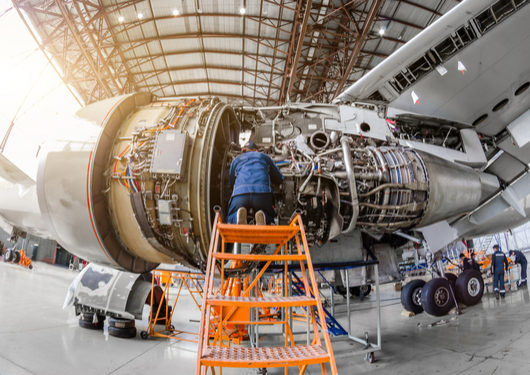
Eighty-six percent of the A&D companies queried in the Accentureresearch say they expect to integrate blockchain into their corporate systems within three years.
As part of an annual effort, Accenture surveyed 30 A&D companies, encompassing original equipment manufacturers (OEMs) as well as tier 1 and 2 suppliers. They were part of a larger report, Accenture Technology Vision 2018, which covered 18 industries. A&D companies led all but two of those sectors in the share of respondents vowing to adopt blockchain technology by 2021.
So why is A&D so bullish on blockchain? John Schmidt, global managing director of Accenture’s A&D practice, chalks it up to the industry’s insistence on authenticity of parts and information flowing through the supply chain. Blockchain’s distributed ledger allows multiple parties to gain transparency into key transactions, he says.
In recent years, A&D has come to rely more heavily on an army of suppliers to provide not only individual parts, but entire systems and pre-assembled portions of an aircraft as well. The move toward greater outsourcing has caused multiple communications snags and production delays.
Even more critical is the need to ensure that every part that goes into a plane is authentic, thoroughly tested and 100-percent safe. Blockchain proponents claim the technology creates a system of record that can’t be hacked or altered because it exists on multiple computers. It also allows for the tracking of aircraft configuration data throughout the supply chain — data that up to now has resided in walled-off systems that rarely communicate with those of other partners.
Schmidt cites the example of an electronics supplier that was participating in a classified government procurement program. It needed assurance that the integrated circuits coming from a vendor were authentic. The solution involved a combination of a blockchain-enabled ledger and tamper-proof CryptoSeals on the packaging. “They now have a way to make sure that they’re getting exactly what they think they’re getting,” he says.
Blockchain can be equally helpful when it comes to maintenance, repair and overhaul (MRO) activities, Accenture says. In another recent report, the firm found that the technology could be deployed along with digital twins — digital replicas of physical objects. For example, designers can create a 3-D model that shows every element of an aircraft engine, allowing manufacturers to make any necessary adjustments while delivering an authorized and comprehensive bill of materials.
Blockchain can also support the use of a digital thread, a framework for ensuring the smooth flow of data throughout an item’s lifecycle. When it comes time to service the engine, maintenance crews can consult the digital model for an accurate representation of its component parts.
“Blockchain, digital twins and digital threads are coalescing into a powerful combination of technologies that will launch the [A&D] industry to higher levels of performance, data veracity, security and efficiency,” according to Craig Gottlieb, a principal director in Accenture’s A&D practice and co-author of the report.
Accenture plans to demonstrate blockchain applications at the U.K.’s Farnborough International Airshow in mid-July. Schmidt says the demonstration will show “how blockchain can address supply-chain problems such as time delays, increased costs and risks to security, particularly related to faulty, counterfeit or incorrect products. [It] will also show how an audit trail provides hardware, software and documentation authenticity and compliance across supply chains.”
Blockchain is, of course, a young technology that has yet to prove itself in a fully functioning global supply chain. Questions remain about the cost and suitability of the method for smaller companies. At this stage, it lacks industry-specific standards for particular transactions, as well as for system-wide security.
Schmidt acknowledges that falsified or corrupt data can still pose a problem for manufacturers. “There is some evidence of data manipulation being executed as part of cyberattacks, introducing bad data into the system,” he says. Blockchain users might need to turn to artificial intelligence and machine learning to ensure data integrity.
The human factor is another obstacle, as is the case with introduction of any new technology. MRO providers running legacy systems and maintaining file cabinets full of paper could feel threatened by blockchain, which makes it easier to switch vendors and maintenance locations, Schmidt says.
Each entity in a global A&D supply chain, of which there can be thousands, will have to get on board with the technology. “Blockchain allows multiple players to engage in a centralized place of truth,” Schmidt says. “We need to make sure that players are willing to engage in that way.”
Yet A&D companies seem determined to embrace blockchain, even as they struggle to iron out the kinks in the concept. Whether they can achieve their ambitious three-year timetable remains to be seen.
“But there’s no question in my mind whatsoever that blockchain is coming to A&D,” says Schmidt. “And its foothold is already here.”







